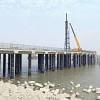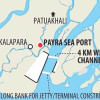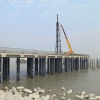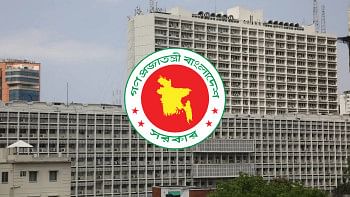Navigability crisis at Payra Port hits coal transport

Navigability at Payra Port, the country's third seaport, has deteriorated, causing severe disruption in coal transportation for the 1,320MW Payra Thermal Power Plant and the RPCL-Norinco International Power Limited (RNPL) plant.
Mother vessels can no longer berth directly at Payra due to the shallowing of the Rabnabad Channel.
As a result, imported coal is first offloaded at Chattogram Port and then transported via lighter vessels to Payra, increasing transportation costs.
This additional cost is being added to electricity production, ultimately raising power generation expenses and increasing consumer dissatisfaction.

"Previously, we directly offloaded imported coal from Indonesia at Payra Port using mother vessels," said Shah Abdul Mawla, project director of the Payra Thermal Power Plant.
"But now, with navigability dropping significantly, we are forced to use Chattogram Port as an intermediary. This has increased coal transportation costs by $13-15 per tonne, whereas earlier, it was $10-12 per tonne."
Similarly, Zubayer Ahmed, chief engineer of the Payra Power Plant, stated that their plant contributes 10% of the country's total electricity demand and consumes over 300,000 tonnes of coal per month.
The Rabnabad Channel's depth has dropped to just 5 metres in the dry season, making it impossible for large coal carriers to dock directly.
Ashraf Uddin, superintendent engineer of RNPL, added, "We have repeatedly notified Payra Port authorities about the declining navigability, but the situation is worsening day by day. Large coal-laden ships can no longer reach the port, forcing us to rely on lighter vessels."
In 2021, Belgian firm Jan De Nul was hired to conduct capital dredging at a cost of Tk 6,500 crore to deepen the Rabnabad Channel to 10.5 metres.
They handed over the dredged channel to the port authority on April 26 last year.
However, within just six months, sediment accumulation drastically reduced the depth.
Currently, the depth stands at 6.5 metres during high tide and 5.9 metres during low tide, making it impossible for mother vessels to berth.
Radiant Shipping Agent Abu Sayeed said, "Due to sedimentation, we are now forced to rely on lightering, which increases both cost and time. Maintaining navigability is crucial for Payra Port to remain viable."
Since April 26, 2024 (when capital dredging was completed), navigability has steadily declined.
Rear Admiral Masud Iqbal, Chairman of the Payra Port Authority, acknowledged the crisis.
"Despite the completion of capital dredging, sedimentation has led to the rapid shallowing of the Rabnabad Channel," he said.
"We conducted an emergency maintenance dredging operation that lasted until August 14, but a long-term solution requires continuous dredging."
He also mentioned that a development project proposal has been submitted to the Planning Commission for approval, expected within the next two months.
The government also plans to purchase hopper dredgers to build in-house dredging capacity.

 For all latest news, follow The Daily Star's Google News channel.
For all latest news, follow The Daily Star's Google News channel. 







Comments